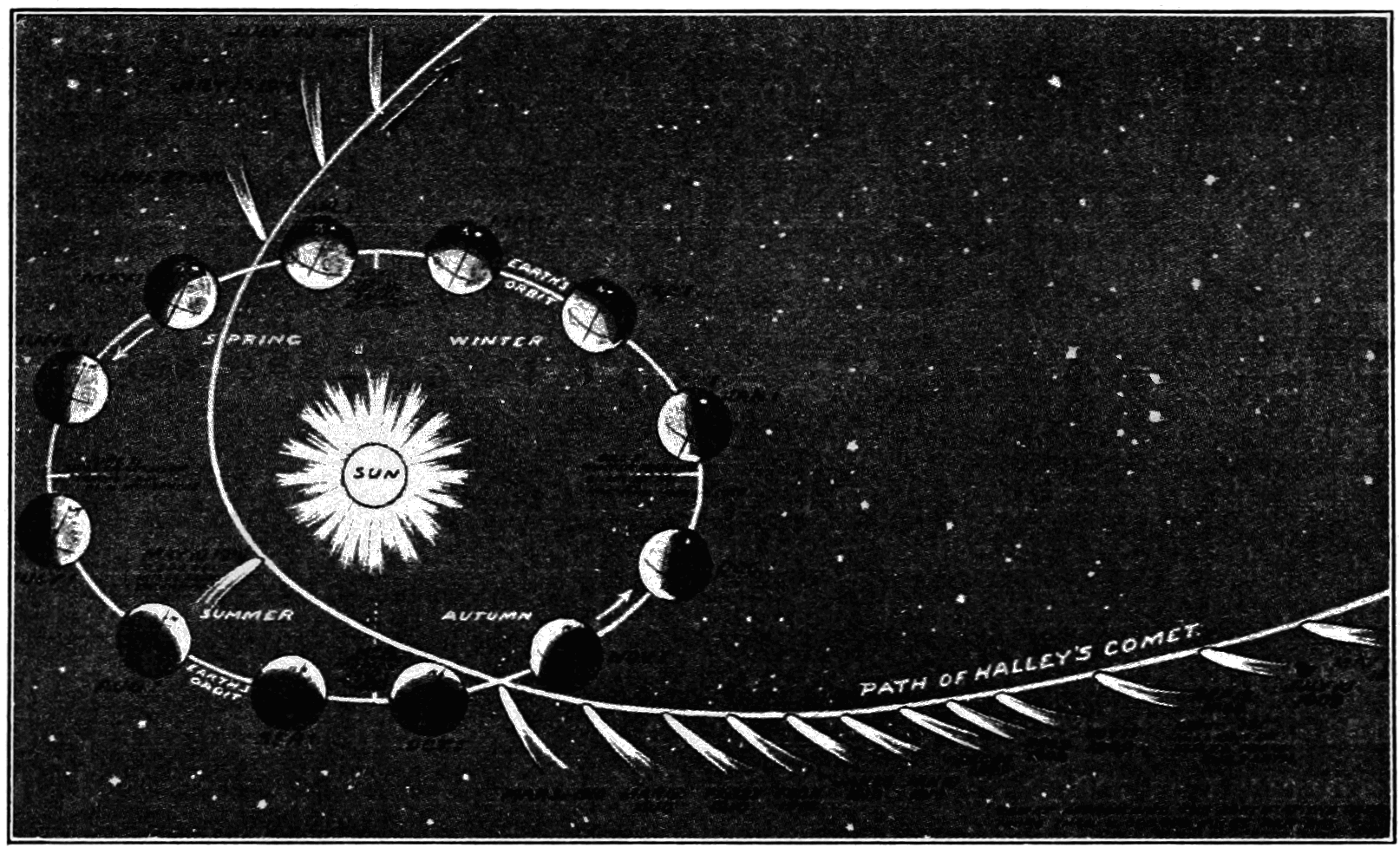MAY 17, 1882: Observers in the path of a total solar eclipse that crossed central Egypt see and photograph a bright comet during totality. Comet Tewfik X/1882 K1, which was never seen again, was an apparent Kreutz sungrazer, and is this week’s “Comet of the Week.” Solar eclipse comets, in general, are the subject of this week’s “Special Topics” presentation.
MAY 18, 44 B.C.: Astronomers in China first record seeing a bright comet, which was also later seen from Europe. The comet’s appearance shortly after the assassination of Julius Caesar has caused it to become generally known as “Caesar’s Comet” and it is next week’s “Comet of the Week.”
MAY 18, 1970: Australian amateur astronomer Graeme White discovers a bright comet deep in evening twilight. Over the next several nights several other independent discoveries of this comet were made, including by Air France pilot Emilio Ortiz and by Carlos Bolelli at Cerro Tololo Inter-American Observatory in Chile. Comet White-Ortiz-Bolelli 1970f was the last bright Kreutz sungrazer to be observed from the ground until 2011. Kreutz sungrazers are the subject of a future “Special Topics” presentation.
MAY 20, 1910: Comet 1P/Halley passes 0.151 AU from Earth, transiting the sun in the process (which was not detected) and briefly creating the longest apparent cometary tail ever observed. Comet Halley’s 1910 return is discussed in a previous “Special Topics” presentation.

MAY 20, 1990: Canadian-American amateur astronomer David Levy visually discovers a 10th-magnitude comet near the “Great Square” of Pegasus. Three months later Comet Levy 1990c became a moderately bright naked-eye object, and later became the first comet to be observed by the Hubble Space Telescope. It is a future “Comet of the Week.”
MAY 21, 1983: Comet IRAS-Araki-Alcock 1983d passes through perihelion at a heliocentric distance of 0.991 AU. A week and a half earlier it had passed 0.031 AU from Earth – the closest confirmed cometary approach to Earth during the 20th Century – and it is last week’s “Comet of the Week.”
MAY 21, 2017: The Pan-STARRS survey program in Hawaii discovers a faint comet located at the enormous heliocentric distance of 16.1 AU. Comet PANSTARRS C/2017 K2 does not pass through perihelion until late 2022, at which time it should become a moderately bright naked-eye object. It is a future “Comet of the Week.”
MAY 22, 1998: CalTech scientist Kenneth Farley and his colleagues (including planetary geologist Eugene Shoemaker) publish a paper presenting evidence that a “comet shower” near the end of the Eocene Epoch 34 million years ago may have been responsible for a mass extinction that occurred on Earth around that time. This is discussed in more detail in a previous “Special Topics” presentation.
MAY 22, 2018: The main-belt asteroid (201) Penelope occults a 10th-magnitude star (TYC 278-748-1) in Virgo. The occultation path passed over the VERITAS telescope array in Arizona, and high-speed imagery of the occultation provided information about the physical characteristics of the occulted star. This observing process is discussed in a previous “Special Topics” presentation.
More from Week 21:
Comet of the Week Special Topic Free PDF Download Glossary
Ice and Stone 2020 Home Page


